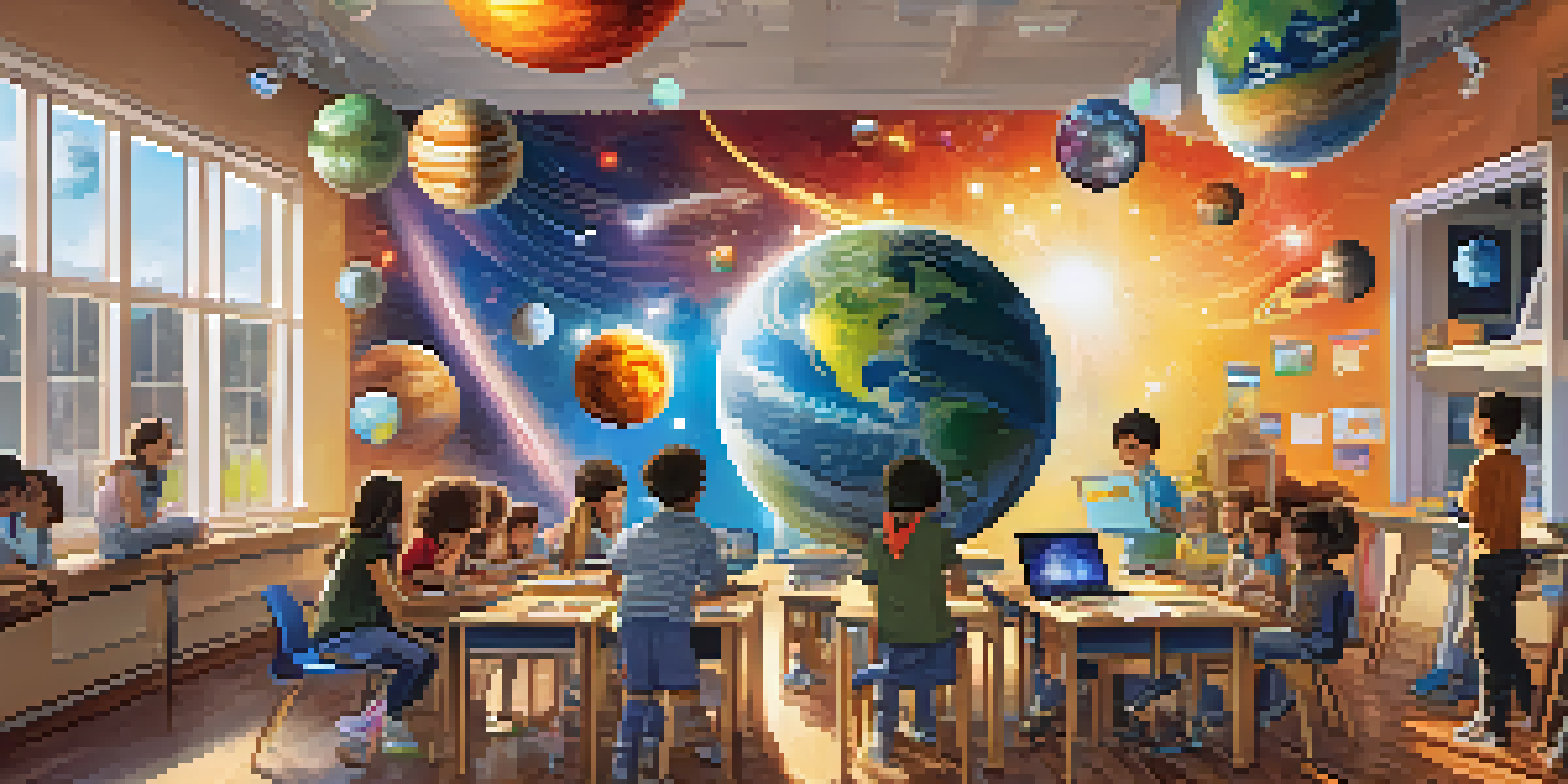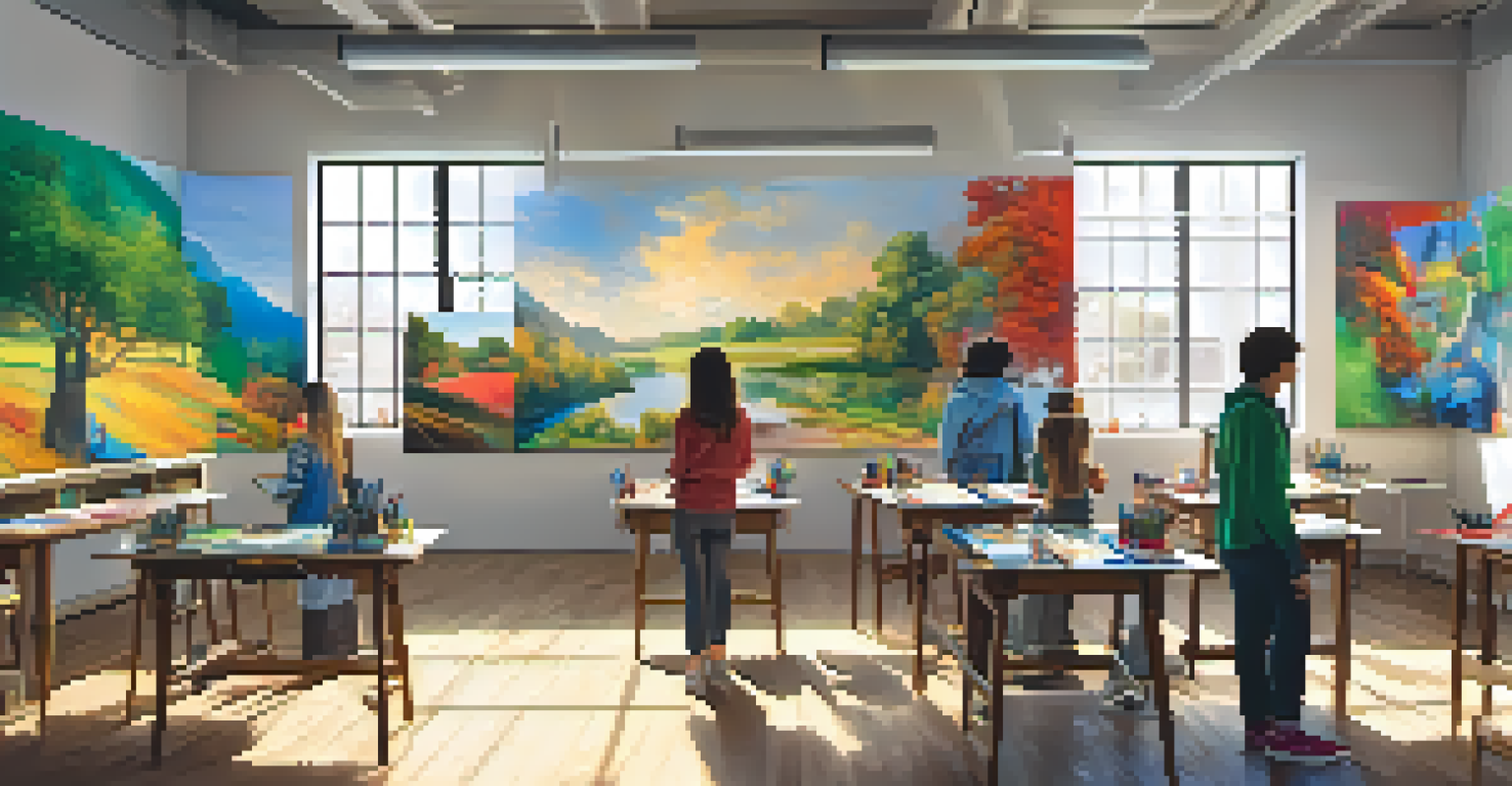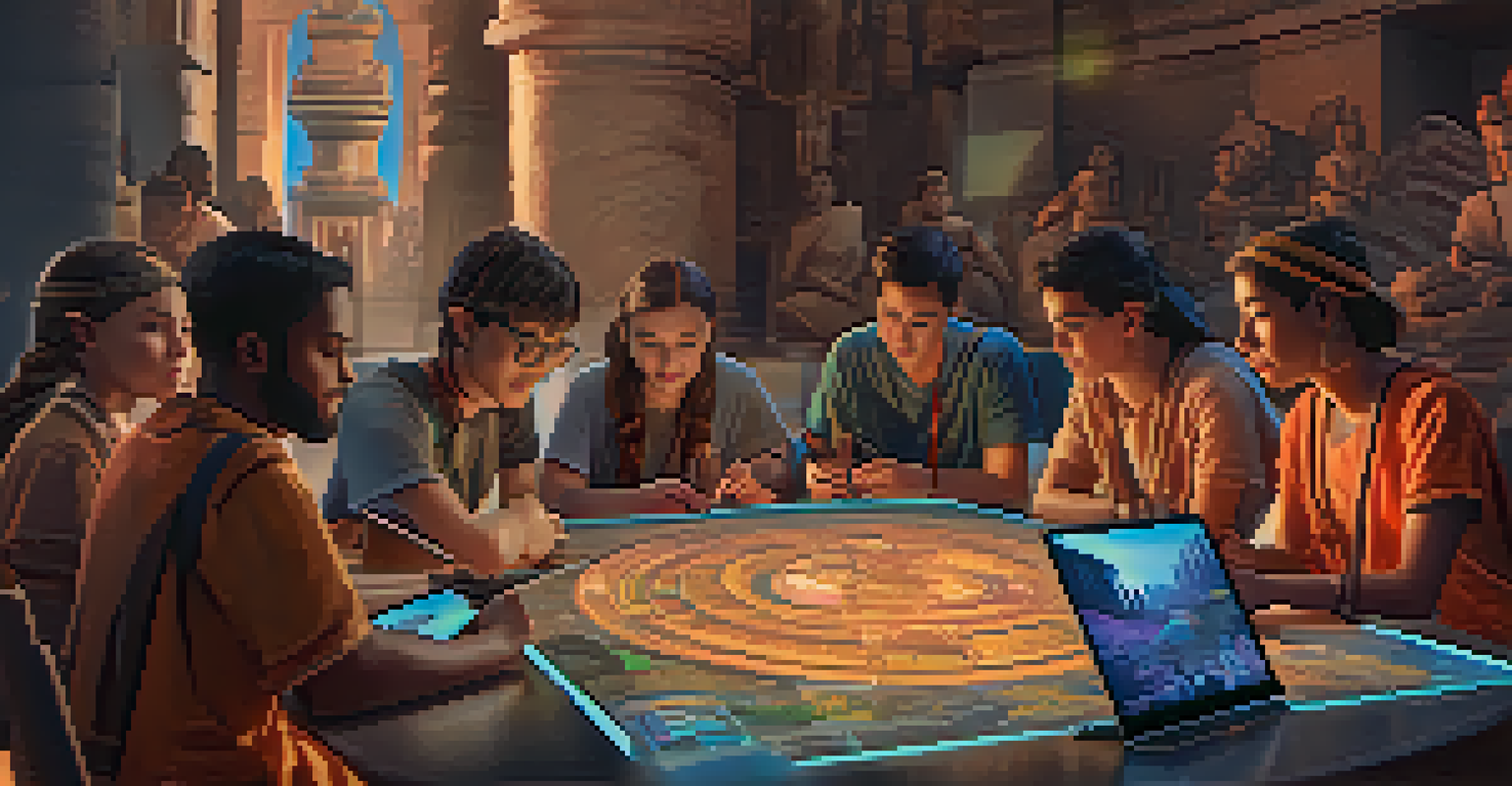Using AR to Support Collaborative Learning in the Classroom

Understanding Augmented Reality in Education
Augmented Reality (AR) blends digital elements with the physical world, creating an immersive learning experience. In education, this means students can interact with 3D models, animations, and simulations as if they were real. Imagine looking at a textbook and seeing a dinosaur come to life right in front of you! AR not only captivates students' attention but also makes complex concepts more tangible.
Augmented reality will change the way we learn. It will take the learning experience to a whole new level, where students can interact with their lessons in ways we never thought possible.
By using AR, educators can provide visual context that enhances understanding. For instance, when learning about the solar system, students can view planets orbiting around a sun in real-time. This interactive engagement fosters a deeper comprehension of subjects, ultimately leading to better retention. As a result, students are more likely to remember what they’ve learned.
Moreover, the integration of AR into the classroom encourages exploration and curiosity. Students can dive into topics that interest them, making learning a more personalized experience. This approach shifts the focus from passive reception of information to active participation, empowering students to take charge of their own learning journey.
Fostering Teamwork Through AR Experiences
One of the most significant benefits of using AR in the classroom is its ability to foster collaboration among students. By working together on AR projects, students learn to communicate effectively and share ideas. For example, a group could create an AR presentation about ancient civilizations, combining their research into a cohesive, interactive display.

These collaborative tasks help students develop essential teamwork skills, which are crucial for future success. They also learn to respect diverse viewpoints and appreciate the strengths that each group member brings to the table. This kind of cooperative learning environment can lead to richer discussions and more innovative solutions.
AR Enhances Learning Engagement
Augmented Reality captivates students' attention and makes complex concepts more tangible through immersive experiences.
Additionally, AR tools often come equipped with features that promote group interaction, such as real-time editing and shared experiences. This means students can see each other's contributions as they work, encouraging a sense of unity and shared purpose. Ultimately, AR can transform the classroom into a vibrant community of learners.
Creating Engaging Learning Environments
AR can turn a traditional classroom into a dynamic learning environment, making lessons more engaging. By incorporating AR elements like interactive quizzes or virtual field trips, educators can capture students' attention in ways that textbooks often cannot. Just think how much more exciting a history lesson becomes when students can 'walk' through ancient Rome.
The future of education is in the hands of technology, and augmented reality is one of the tools that will help bridge the gap between theoretical knowledge and practical application.
This engaging atmosphere not only makes learning fun but also increases motivation among students. When they see learning as an adventure rather than a chore, they are more likely to participate actively and invest effort into their studies. This excitement can lead to deeper exploration of topics and a stronger desire to excel.
Moreover, an engaging learning environment helps cater to different learning styles. Visual learners can benefit from the 3D models, while kinesthetic learners can interact with digital elements. By accommodating diverse preferences, AR can help ensure that every student finds joy in learning.
Enhancing Problem-Solving Skills with AR
Another powerful aspect of AR in education is its potential to enhance problem-solving skills. Through interactive scenarios and real-world challenges, students can work together to find solutions. For instance, they might use AR to simulate an environmental crisis and brainstorm ways to address it.
These problem-solving exercises not only build critical thinking skills but also encourage creativity. Students learn to approach challenges from different angles, considering various perspectives and solutions. This hands-on approach prepares them for real-life situations where problem-solving is essential.
Collaboration Boosted by AR Tools
AR fosters teamwork by enabling students to work together on projects, enhancing communication and creative problem-solving.
Additionally, AR can provide instant feedback during these exercises, allowing students to assess their progress in real-time. This immediate input can help them refine their strategies and improve their skills, making learning both effective and engaging.
Bridging the Gap Between Theory and Practice
One of the remarkable advantages of AR is its ability to bridge the gap between theoretical knowledge and practical application. In fields like science and engineering, students can conduct virtual experiments or visualize complex systems without the constraints of a physical lab. For example, a chemistry class can use AR to observe molecular interactions up close.
This practical experience not only solidifies their understanding but also prepares them for real-world applications in their future careers. They learn to apply theoretical concepts in a hands-on manner, which enhances their skill set and confidence. Such experiences can be invaluable as students transition from the classroom to the workforce.
Moreover, by connecting theory to practice, AR makes learning more relevant and meaningful. Students are more likely to see the value of what they are learning when they can visualize how it applies to real-life situations, fostering a deeper appreciation for their studies.
Incorporating AR in Diverse Subjects
AR is versatile and can be applied across various subjects, enriching the learning experience in multiple disciplines. Whether it's history, science, or art, AR can provide unique insights and interactive elements that enhance understanding. For example, in an art class, students can use AR to examine famous paintings in detail, analyzing brush strokes and techniques used by the artist.
This cross-disciplinary approach allows students to make connections between subjects, enhancing their overall learning experience. They begin to see how different fields interrelate, fostering a more holistic understanding of their education. Such connections can ignite a passion for learning and encourage students to explore diverse interests.
Bridging Theory and Practice
AR helps students connect theoretical knowledge with practical application, preparing them for real-world challenges.
Additionally, integrating AR across subjects prepares students for an increasingly interconnected world. As they learn to think critically and creatively, they become better equipped to tackle complex problems that require knowledge from multiple domains.
Overcoming Challenges of Implementing AR in Classrooms
While the benefits of AR in education are substantial, there are challenges to consider when implementing these technologies in classrooms. One major hurdle is access to the necessary devices and software, which can be a barrier for some schools and students. Ensuring that all students have equal access to AR tools is essential for maximizing its potential.
Moreover, educators may require training to effectively integrate AR into their teaching practices. Professional development programs can help teachers become comfortable with AR technology and explore innovative ways to incorporate it into their lesson plans. This training is vital for ensuring that AR is used effectively rather than as a gimmick.

Lastly, it’s important to strike a balance between AR and traditional teaching methods. While AR can enhance learning, it should complement rather than replace foundational teaching strategies. By blending both approaches, educators can create a well-rounded learning experience that engages students while providing essential knowledge.